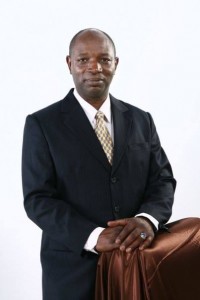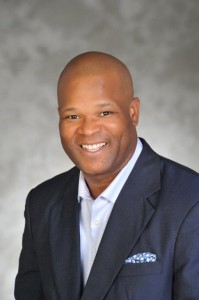The Council vote is over, but don’t expect the fight to be.

In four separate public forums since mid-August, more than 1,500 people approached the dais at City Hall and addressed the council, speaking passionately in support of and against the ordinance that drew national attention. Final public comments were heard about three hours before the council took its vote.
In separate votes, the council approved adding veteran status 9-2, and approved adding LGBT protections 8-3.
“It’s a common-sense ordinance that’s going to treat everyone equally,” Mayor Julián Castro said after the vote. “Nobody will be a second-class citizen in San Antonio. Here, there will be basic fairness and common decency for everybody.”
When it was over, red-clad supporters of the policy walked victoriously out of the council chambers, waving rainbow flags. They spilled into Main Plaza shouting mantras of equality and justice.
And opponents, dressed in blue, left quietly in defeat, vowing to fight the ordinance in the courts and to unseat or recall elected leaders for ignoring their pleas to table or spike the measure altogether.
The possibility of legal action, which is probably close to 100% at this point, was raised before the vote was taken. I’m sure you can guess who’s leading that parade.
On Wednesday, Attorney General Greg Abbott, a candidate for Texas governor, wrote a letter to Castro, warning the current draft was vulnerable to lawsuits.
Among his concerns were protections for religious expression, including city officials and residents who voice support for traditional marriage. He noted the Texas Constitution recognizes traditional marriage alone. The proposed ordinance does not address same-sex marriage.
That sort of detail, or the fact that NDOs like this exist all over the place have never troubled Greg Abbott.
Nearly 200 cities across the country have enacted ordinances in recent years that prohibit bias by municipal employees or in city contracts over someone’s race, sex, age, religion or sexual orientation. Houston, Austin, Dallas and Fort Worth are a few of the Texas cities that adopted such measures.
Funny, I don’t remember such wailing and gnashing of teeth when those cities adopted NDOs. So what is this all about, really?
All of the major statewide elected positions are open contests in the Republican primary. And while voters do not head to the polls until March, many Republicans seeking statewide office have seized on San Antonio’s ordinance in what some see as a way to appeal to the grass-roots conservatives who make up the bulk of the electorate in the party’s Texas primaries.
“It is Republican statewide candidates signaling their base that they are true and trustworthy conservatives,” said Calvin Jillson, a political science professor at Southern Methodist University in Dallas. “When you’re running for statewide office, you don’t control what the San Antonio mayor and Council do. So all you’re really doing is taking an ideological position that you then project toward the Republican primary electorate, so that they can see that you’re a social conservative and you are manning the ramparts against undesirable social change.”
There appeared to be other political reasons that the debate became closely watched.
Republicans sought to engage San Antonio’s mayor, Julián Castro, who supported the measure and has become one of the few Democrats in a Republican-dominated state with star power, political science professors said. A number of Democrats want Mr. Castro, who gave the keynote address at the Democratic National Convention in 2012, to run for statewide office. The debate over the ordinance became as much about challenging Mr. Castro’s vision for San Antonio and his future ambitions as it was about gay rights.
“An issue that otherwise would primarily be confined to local media coverage and some protests by social conservatives has taken on a state and even national level scope, and that’s due to the fact that Julián Castro is involved,” said Mark P. Jones, a political science professor at Rice University in Houston.
No surprise there. I can’t wait to see what clever nickname Erick Erickson comes up with for Mayor Castro. In the meantime, my advice for Greg Abbott is go right ahead, file suit. Let’s give the courts another chance to evaluate Texas’ retrogressive laws and policies. I for one do not fear that. As for the possibility of recall elections, apparently the efforts were already underway before the vote.
Several groups are now targeting Mayor Julian Castro for violating his duties according to the Constitution for supporting the proposed non-discrimination ordinance. The groups include the Bexar County Conservative Coalition, the San Antonio Family Association, and the Justice Foundation.
They are also collecting signatures to oust District 1 Councilman Diego Bernal, who has been spearheading the issue, for the same reasons.
Opponent Gina Castaneda, who is block walking to collect signatures to oust Bernal from office, says the groups decided to launch a similar campaign against Castro. She said she and others believe Castro inappropriately signed off on the measure without receiving the proper number of signatures on the Governance Committee, which heard the proposal before it went to the full city council.
[…]
Castaneda said the groups need 70,000 signatures to recall Castro.
So far, she said, they have about half of the 6,000 signatures needed to recall Bernal.
As for future recalls, Castaneda said opponents to the ordinance are ready to recall any and all of the council members that vote in favor of the non-discrimination ordinance revisions.
Well, they’ve got their work cut out for them now. For what it’s worth, Mayor Castro got 66.5% of the vote this past May, in a really low turnout election, and CM Bernal got 63.5% winning a runoff two years ago. I’m not terribly worried about either of them, but if this goes through it’ll be up to everyone who supports equality to do what they can to help these two and anyone else who is targeted. Now is not the time to declare that we’re all done. Remember, as Express-News columnist Gilbert Garcia points out, elections do have consequences.
For all the tireless grass-roots organizing and the passionate public testimonials by NDO supporters in recent weeks, their greatest victories during the process came June 15, when Ron Nirenberg and Shirley Gonzales won their runoff contests.
In a matter of hours, the pro-NDO cause gained two desperately needed council votes, because Nirenberg and Gonzales both faced opponents who opposed the ordinance.
In the case of Gonzales, the issue almost certainly salvaged her campaign against incumbent David Medina, a point that Gonzales acknowledged from the dais Thursday.
The Service Employees International Union (SEIU) had endorsed Medina before the May 11 election, but they reversed themselves and decided to back Gonzales for the runoff when it became clear that Medina would be an obstacle to the NDO’s passage. The combined runoff support of the Community Alliance for a United San Antonio (CAUSA) and SEIU were absolutely crucial to her narrow 117-vote victory.
In the case of Nirenberg, he might have caught a break because his adversary — the deep-pocketed but scandal-prone engineering consultant Rolando Briones — didn’t fully realize how intense the NDO opposition would become.
Briones spent much of his campaign trying to convince conservatives in his North Side district that he spoke their language, and he might have pulled it off with an all-consuming, stretch-run attack on the NDO issue.
With Nirenberg and Gonzales on board, District 1 Councilman Diego Bernal — the chief council architect of the ordinance — had a secure majority behind him. Without them, he would have faced a 5-5 tie going into the final week, with everything hinging on the uncommitted Rebecca Viagran (who ultimately backed the ordinance).
The runoff saga is a useful reminder that elections have consequences. While we saw citizens line up to speak to the council about the ordinance, we rarely see comparable municipal-election lines at polling centers, where voters have a chance to put in place the council members who will decide issues such as the NDO.
If there is a recall effort, we might see that kind of turnout effort that could have swayed things the other way in June. If so, as Josh Brodesky wrote before the NDO vote was taken, the anti side might want to reflect on the fact that they are their own worst enemy.
The louder they have shouted against proposed protections for the city’s gay community, the more necessary the nondiscrimination ordinance in San Antonio has become.
They took something that was commonplace — such protections exist in towns and cities across this country — and elevated it into something extraordinary.
All along, this was about providing equal protections to another group of people, but opponents made it about themselves: their beliefs, their speech, their morality.
To raise concerns about morality, and exemplify their freedom of speech, they rallied around disgust. Just like City Councilwoman Elisa Chan, they were disgusted by gays. And just like Chan, they were exercising their freedom of speech to express this disgust.
“At a certain point, when you listen to some people speak, what they are saying is, ‘I want to reserve the right to not serve these people. I want to reserve the right to discriminate against these people, and you are taking that away from me,’” City Councilman Diego Bernal said.
“And my response is, ‘Well, yeah. If there is one right I am taking away from you, it’s your right to discriminate against this group.’”
In this sense, opponents to the nondiscrimination ordinance were just as tone deaf as Aaryn Gries, the Texas State University student whose bigoted comments on the reality show “Big Brother” drew national attention.
And in that sense, it’s good to see these folks let it all hang out. Let’s all be clear about who stands for what. Since Brodesky brought up the infamous CM Chan, let’s go back to the first story linked in this post for one more point to make.
During the course of public testimony, many speakers said the opposite, citing scripture as evidence of what they consider immoral acts.
Councilwoman Elisa Chan, whose secretly recorded May 21 staff meeting on the issue thrust the debate into the national spotlight, has alternatively become a pariah and a heroine.
Last week, when the council met to discuss the proposal, she was greeted by a standing ovation. Later, ordinance supporters chastised her for disparaging remarks she made in the secret recording about the LGBT community.
In it, Chan called gays “disgusting” and said they shouldn’t be allowed to adopt children. On Thursday, Chan expressed disappointment in the process.
“Over the course of this debate, tolerance has separated itself from understanding and has become a dictate to agree. I have not heard a single person who said he or she agrees to any form of discrimination,” Chan said. “Just because I disagree with the lifestyle choices of the LGBT community doesn’t mean that I dislike them.”
No, Council Member Chan. You don’t get to be nice. You are working to deny other people their civil rights. You need to own that. If you were capable of hearing how your words might sound to someone who is directly affected by them, you might be able to understand that.





















